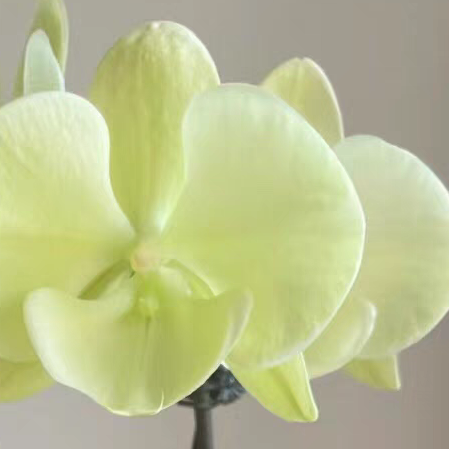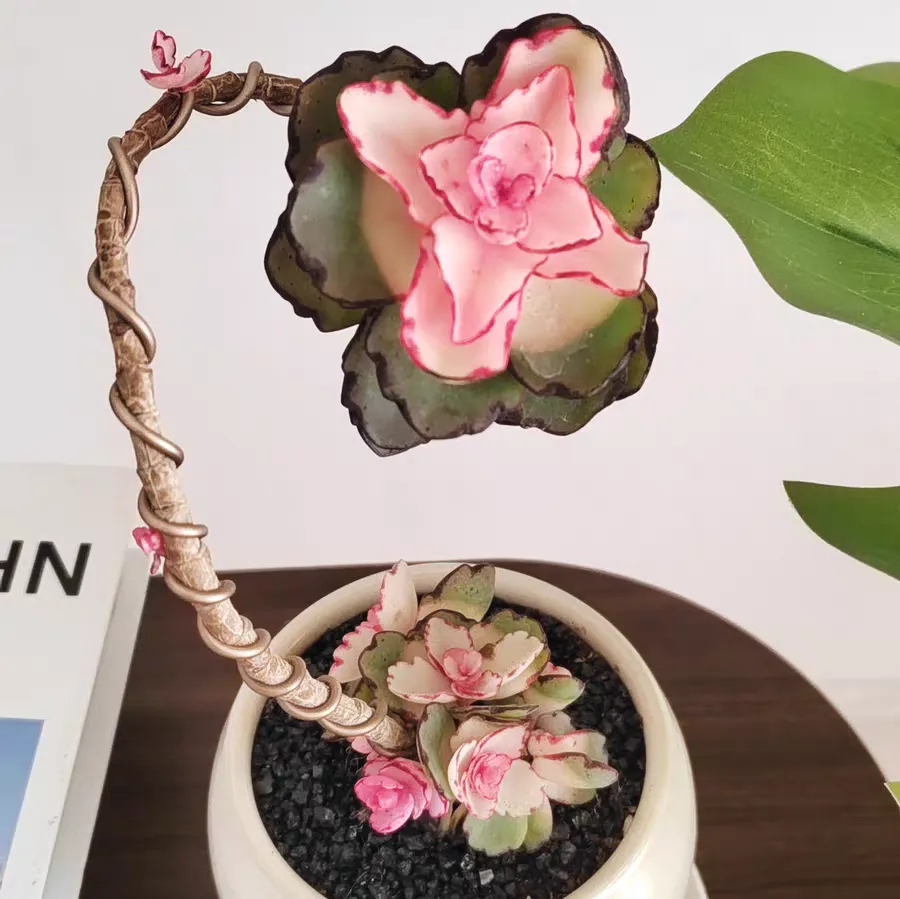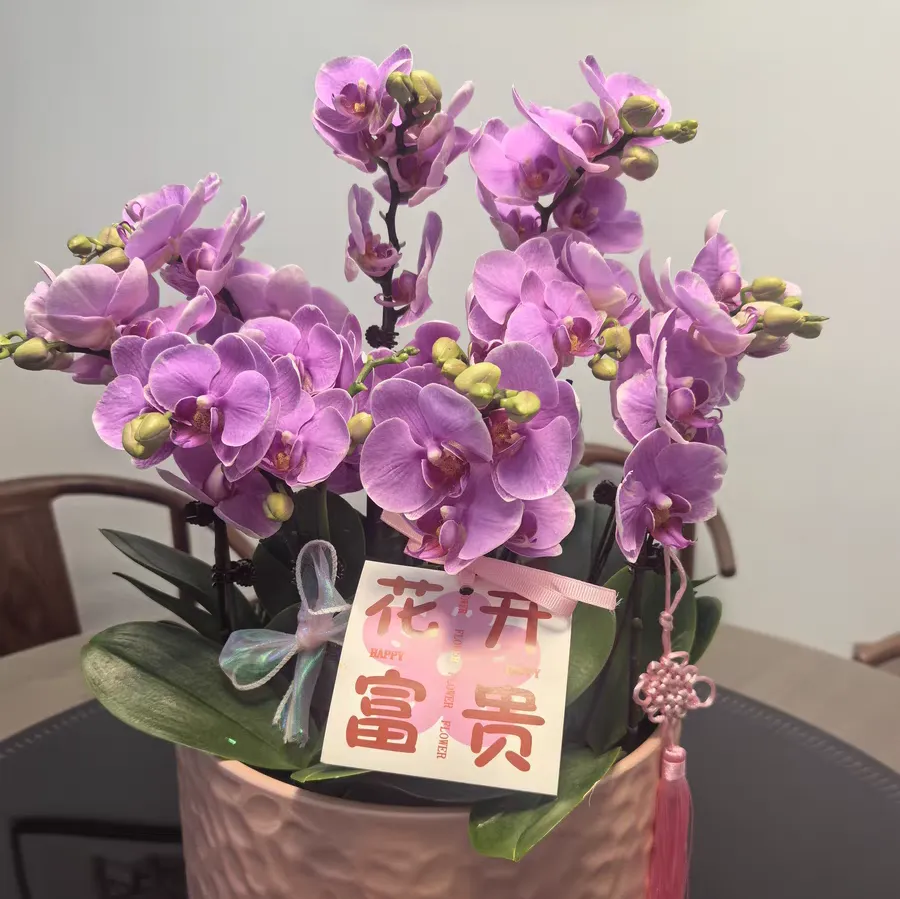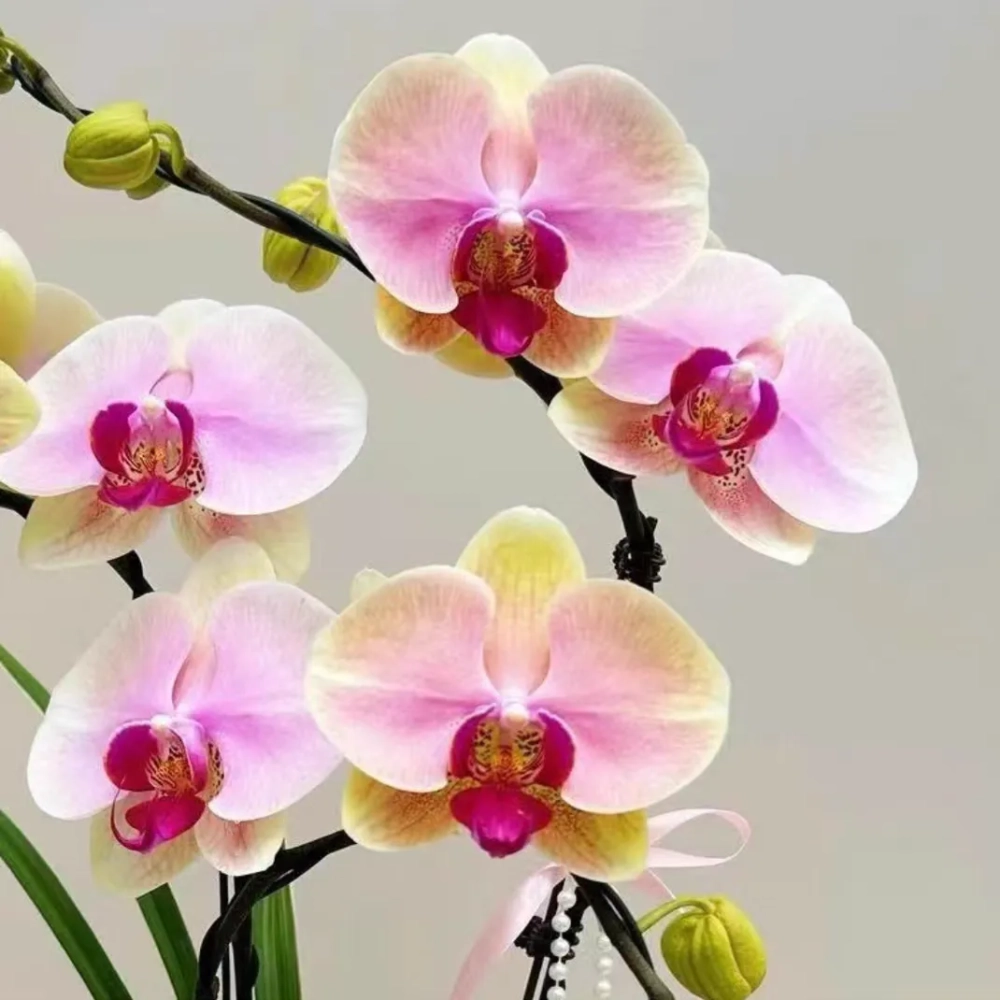Phalaenopsis has always been a favorite in the flower world, and the Shuiling Phalaenopsis, in particular, attracts the attention of many flower lovers with its unique charm. Today, let's talk about the Shuiling Phalaenopsis.
The flowers of the Shuiling Phalaenopsis are relatively light in color, with a light green hue on the back, and overall they look whitish with a tinge of light green. The slight yellowish tint when they first bloom adds a bit of playfulness and vividness. Moreover, its lip is relatively large. Although it is somewhat similar to the Xingyue variety, its petals are thinner and lighter, and the degree of flower expansion is a bit lacking. However, these characteristics actually make it more uniquely charming.
Then, is the Shuiling Phalaenopsis the same as the Lülinglong? Actually, the Shuiling Phalaenopsis is not the Lülinglong. The Lülinglong is a specific variety of Phalaenopsis, which has its own unique plant morphology, leaf characteristics and flower patterns.
When we find that the leaves of the Shuiling Phalaenopsis are not fresh and juicy, this may be caused by multiple reasons. First, insufficient light. Although Phalaenopsis cannot withstand direct strong sunlight, it still needs sufficient scattered light for photosynthesis. If it is placed in a too dark place for a long time, the leaves will become dull and lack vitality. The solution is to move the Phalaenopsis to a bright but shaded position, such as a place near the window but covered by a gauze curtain, so that it can receive an appropriate amount of light.
Second, improper watering. Both overwatering and underwatering will affect the state of Phalaenopsis. If there is too much water, the roots are prone to rotting, resulting in the leaves being unable to absorb water and nutrients normally, and thus becoming shriveled and not fresh. While if there is too little water and the plant lacks water, the leaves will also wrinkle. The correct approach is to adjust the watering frequency according to the season and environmental humidity. Generally speaking, insert your finger about 2 - 3 centimeters into the soil, and water when it feels dry, and water thoroughly until the water flows out from the bottom of the pot, but avoid waterlogging.
Third, insufficient humidity. Phalaenopsis likes a high-humidity environment, and dry air will cause the water in the leaves to evaporate quickly. You can increase the air humidity by spraying water mist around, using a humidifier or placing water basins. It is more appropriate to keep the air humidity at around 60% - 80%.
There are also many things to pay attention to in the daily care of the Shuiling Phalaenopsis.
In terms of temperature, Phalaenopsis grows well in an environment with a temperature between 18 - 28 °C. In winter, it is necessary to keep it warm and not let the temperature drop below 15 °C, otherwise it may suffer from frost damage. In summer when the temperature is high, it is necessary to shade it appropriately to cool it down.
Fertilization should also not be neglected. During the growing season, you can apply a thin liquid fertilizer once every 2 - 3 weeks, such as a special Phalaenopsis nutrient solution. Dilute it according to the instructions and then water the roots or spray the leaves. Before the flowering period, applying more phosphorus and potassium fertilizers will help with flower bud differentiation and flowering.
The choice of soil is also crucial. Use loose, breathable and well-drained planting materials, such as a substrate mixed with sphagnum moss, bark, coconut coir, etc., which can ensure that the roots have a good breathing and growing environment.
In addition, regularly check the health status of the plant, promptly cut off withered and diseased leaves to prevent the spread of pests and diseases. If pests and diseases are found, take corresponding prevention and control measures in a timely manner, such as wiping the leaves with a soft cloth to remove scale insects or using biological pesticides to control diseases.
What are the reasons why the leaves of the Shuiling Phalaenopsis are not fresh and juicy?

Share with
Tagged in :




Leave a Reply